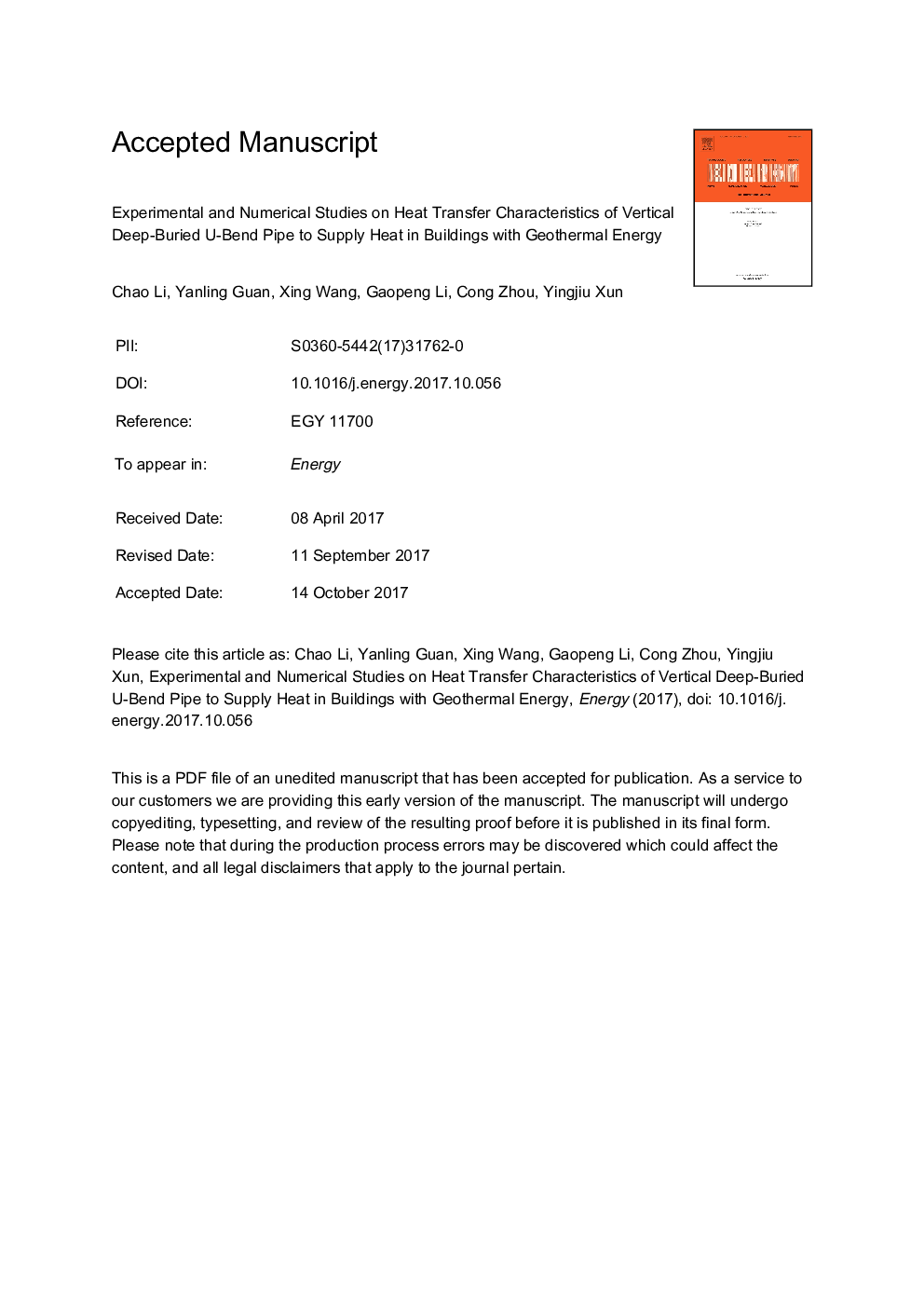| Article ID | Journal | Published Year | Pages | File Type |
|---|---|---|---|---|
| 8072544 | Energy | 2018 | 25 Pages |
Abstract
In this study, in-situ experiments and numerical simulations were used to study the heat transfer characteristics of a heat exchange system, a vertical deep-buried U-bend pipe with a buried depth of >2000 m to supply heat to buildings in Xi'an using geothermal energy. The in-situ experimental conditions include a constant inlet temperature and water flow rate in the deep-buried pipe, and the inlet and outlet water temperatures of the buried pipe were measured to obtain the dynamic heat transfer load of the buried pipe under the experimental conditions. Based on the experimental results, a full-scale numerical calculation model combining the heat transfer processes inside and outside the pipe was established and validated. Based on the model, the effects of water flow rate and running time of the system on the heat transfer capacity of the buried pipe were calculated and analyzed under the practical conditions of nonuniformity from the top to the bottom by considering the ground temperature and structure of rock and soil. The thermal effect radius and linear meter heat transfer of the buried pipe were also analyzed.
Related Topics
Physical Sciences and Engineering
Energy
Energy (General)
Authors
Chao Li, Yanling Guan, Xing Wang, Gaopeng Li, Cong Zhou, Yingjiu Xun,
